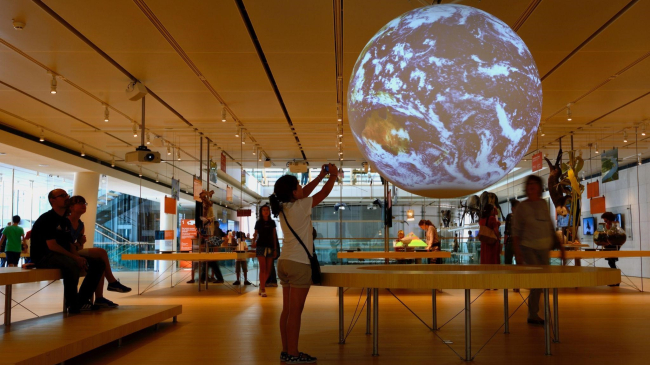October is National Seafood Month! Sustainable seafood plays an essential role in feeding the world's growing population.
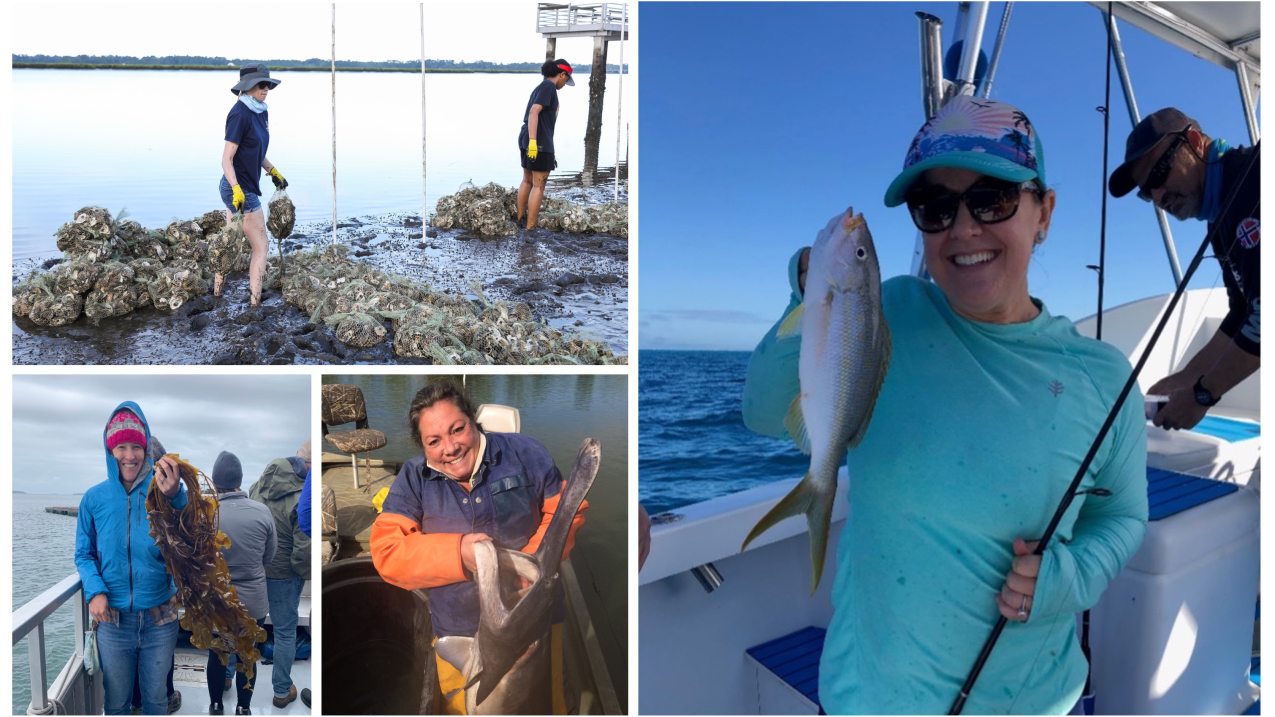
Seafood experts in the Southeast participate in everything from seafood outreach, education, and consumer guidelines, to harvesting and researching for restoration. (Image credit: Courtesy of Seafood Month participants)
In the Southeast region (Gulf of Mexico and South Atlantic states, Puerto Rico and the U.S. Virgin Islands), marine aquaculture focuses on stock enhancement (i.e., the release of juvenile fishes to supplement wild populations), food production, research, and restoration efforts. Species cultured in the region include oysters, clams, shrimp, red drum, almaco jack, spotted seatrout, summer flounder, snook, pompano, black seabass, and algae.
Learn from experts in the Southeast region about what they're "cooking up" in the field, and in their own kitchens!
For more information, visit NOAA Fisheries Office of Aquaculture's Southeast region fact sheet.

Maggie Allen
Education and Grants Specialist
Coastal Ecosystem Learning Centers team member
NOAA Office of Education
Through research and conversations, it's super clear how diverse fisheries are across the United States, from the type of gear used, to wild versus farmed, to species type, to communities’ values and related social justice issues.
Learn more about Maggie
In what ways are you connected to seafood? Is there a specific passion that drove you to do the work that you do today?
I grew up in Florida surrounded by water and eating fried catfish and scallops, so I've always felt a connection to aquatic environments. I'm a marine social scientist by training and especially interested in our relationship to place, and local seafood elicits such a strong connection to environments we care about. I received a master's in Marine Affairs from the University of Washington, where I learned a lot about fisheries economics and policy, and I've worked at NOAA Fisheries West Coast Regional Office as a social scientist, researching the complex human dimensions of fisheries management. During my Knauss Fellowship at NOAA's Office of Education, I helped establish an aquaculture education initiative with our partnership with North American aquariums. This really combined my two loves — environmental education and fisheries.
What's something unique about seafood in your region that makes it a fun sector to work or teach in?
I work at the national level, so I'm able to learn more about and connect with people in the seafood sector all over the country, and in some cases, internationally. I really like this broad approach, collaborating and forming partnerships with sometimes unlikely allies. I also do a wide variety of work, like facilitating workshops and webinars, collaborating with aquarium educators, and managing grant programs. Not all of this is directly related to seafood, but it makes the days interesting and the work rewarding, especially when I visit sites in person and see the good work people are doing.
What's something you wish everyone knew about your work or your region?
Through research and conversations, it's super clear how diverse fisheries are across the United States, from the type of gear used, to wild versus farmed, to species type, to communities’ values and related social justice issues. This really makes it clear how important it is for place-based education and for educators and communicators to tailor their messages to the particular places they live in. It’s so essential that we don't generalize about anything in this field.
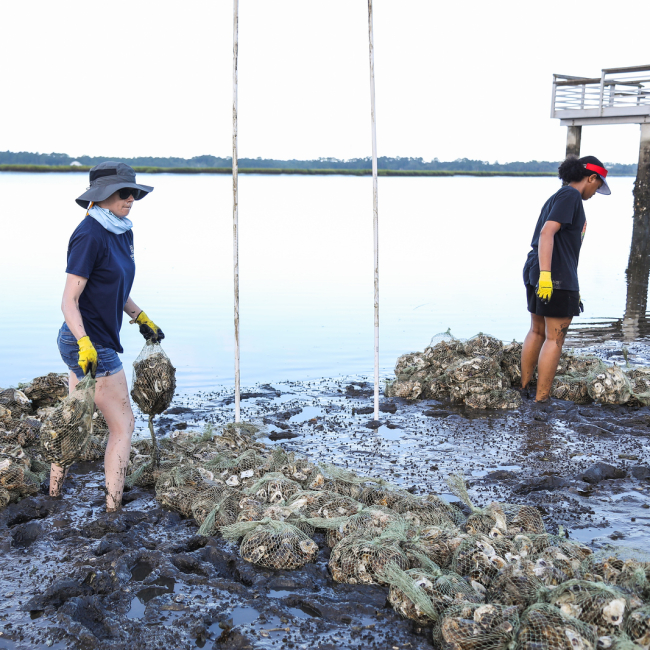
Erin Arneson
Aquaculture Field Technician
University of Georgia Marine Extension and Georgia Sea Grant offsite link
Athens, Georgia
My passion for finding common ground with people to start conversations about environmental mindfulness is what ultimately led me to seafood.
Learn more about Erin
In what ways are you connected to seafood? Is there a specific passion that drove you to do the work that you do today?
I currently work as an aquaculture field technician with Marine Extension and Georgia Sea Grant offsite link in Georgia. Some of our current projects involve studying oyster reef restoration and oyster disease. We also conduct research on oyster aquaculture and share what we learn with shellfish farmers. I grew up in the Midwest with relatives and neighbors that were farmers and fishermen. I did not often feel that I saw eye-to-eye with my community about environmental issues. However, the more I listened to their stories, I found out our values were not as different as it first appeared.
My passion for finding common ground with people to start conversations about environmental mindfulness is what ultimately led me to seafood. If someone loves to eat oysters or clams, they may become curious about where these animals come from, which is a great segue for a biologist or educator trying to inform and inspire people to appreciate our coastal resources. Conversations fueled by curiosity offer perspective, spread awareness, and bridge gaps. I believe it is also our responsibility as biologists to put ourselves in other people’s shoes, thinking about their daily experiences and their motivations in order to find mutual understanding and build trust. This is key to finding solutions to coastal issues that benefit coastal communities and the environment.
What's something unique about seafood in your region that makes it a fun sector to work or teach in?
We have a pretty healthy population of oyster reefs in Georgia. They are easily spotted at low tide, growing along the salt marsh edge in our estuaries. I think this is really unique because a lot of people on the coast can visualize oyster reef habitat when you describe it. I love working in this region because we’re consistently witnessing what my coworker has deemed “Jacques Cousteau” moments. In the field, we get to see dolphins feeding, sting-rays jumping from the water, ospreys catching fish, and more!
What's something you wish everyone knew about your work or your region?
Georgia has an expansive tidal range. The tides rise and fall twice a day and typically range from 6-8 feet. It is amazing to watch how much the environment changes during this tidal cycle when we are working in the field. Although I have heard comments about low tide being smelly, or looking mucky and gross, I wish people could hold their nose and witness the beauty of it. Low tide is when the marsh comes to life!
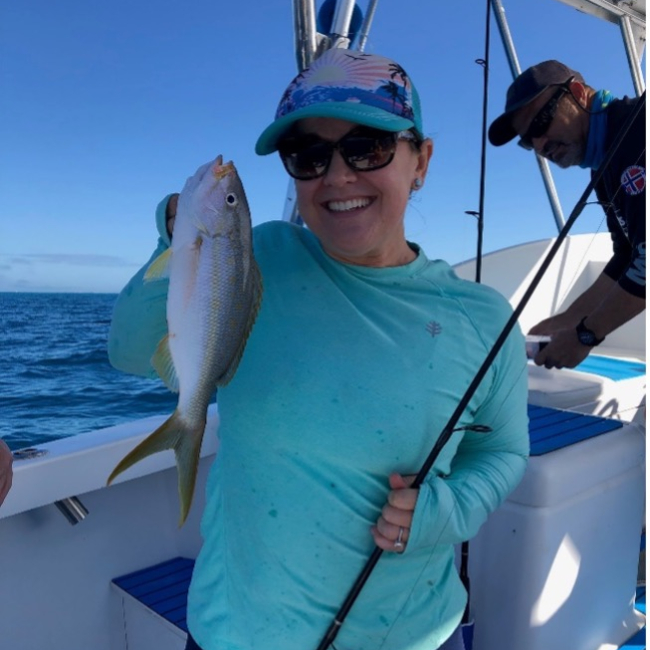
Kellie Casavale
Senior Science Advisor for Nutrition
Office of Analytics and Outreach
Center for Food Safety and Applied Nutrition
Food and Drug Administration, Health and Human Services
Watch Kellie’s webinar for the Coastal Ecosystem Learning Centers network here offsite link.
It brings me a lot of contentment to be part of teams that create information to support public health, like our educational materials on seafood and child growth and development.
Learn more about Kellie
In what ways are you connected to seafood? Is there a specific passion that drove you to do the work that you do today?
My passion began with nutrition policy. I began my connection to seafood as a policy writer for the seafood recommendations of the Dietary Guidelines for Americans. At the United States Food and Drug Administration (FDA), I am also able to work on our “Advice about Eating Fish” for parents and caregivers about seafood’s unique package of nutrients while also encouraging them and those who are pregnant or breastfeeding to choose options lower in mercury. I am really passionate about our broader work on the role of nutrition in helping to counteract the effects of potential environmental contaminants — with the ultimate goal to support child growth and development. There is so much great work to do in this space.
What's something unique about seafood in your region that makes it a fun sector to work or teach in?
I work in population-level policy. Having the opportunity to evaluate science on seafood and health and to also do studies on how to connect with consumers is really fun. It brings me a lot of contentment to be part of teams that create information to support public health, like our educational materials on seafood and child growth and development.
What's something you wish everyone knew about your work or your region?
At the FDA, we are taking a more holistic view of the role of eating seafood in human health. In fact, we released an announcement that we are partnering with NOAA, United States Department of Agriculture, and Environmental Protection Agency to support an independent study of the science on the role of seafood in child growth and development.
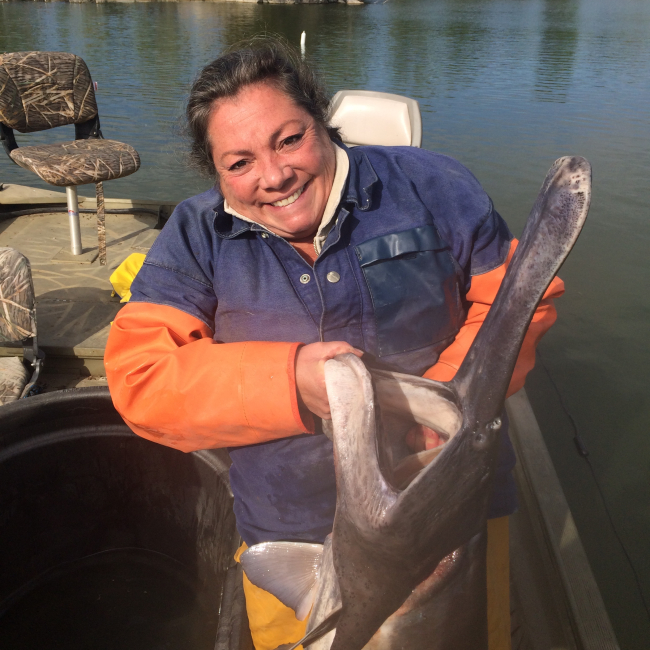
Angela Caporelli
Aquaculture Coordinator
Kentucky Department of Agriculture (NOAA federal partners)
Frankfort, Kentucky
Knowing where [seafood] comes from and how it is grown has spurred a great trend for Kentucky-grown seafood.
Learn more about Angela
In what ways are you connected to seafood? Is there a specific passion that drove you to do the work that you do today?
I was mesmerized by the gills of a just caught giant bluefish when I was 5 or 6 as my grandmother cleaned it for fish chowder. I thought they were so intricate and beautiful. I started my college career at University of Rhode Island (URI) in medical technology, thinking more on the lines of forensics. But after taking an Oceanography class … then a fisheries class … and then the first aquaculture class offered at URI, I never turned back. I have now been working in aquaculture, fisheries, and seafood safety for over 40 years. I have had great opportunities to teach fish production in central Africa with the Peace Corps, work as a fisheries observer, conduct fisheries restoration programs, and hold positions as both Vice President and President of the United States chapter of the U.S. Aquaculture Society, as well as a board position on the World Aquaculture Society.
In my role as Aquaculture Coordinator, I am lucky to be able to bring all the skills I have acquired along the way together to help farmers in Kentucky create production systems, produce healthy fish efficiently, market and educate consumers to increase demand, and offer healthy safe seafood products grown and processed on Kentucky farms.
What's something unique about seafood in your region that makes it a fun sector to work or teach in?
Seafood in Kentucky has grown in popularity over the past 15 years, and locally grown product demand has exploded as people have become more food savvy and seek locally grown seafood. We grow several species here, both freshwater and marine, and we are ever increasing our options for farmers in techniques, production systems, and species. We have seen exponential growth in aquaponics and reservoir ranching [a style of aquaculture in which fish are stocked in reservoirs and allowed to feed on the natural food sources until they are harvested] for paddlefish for caviar production. Knowing where it comes from and how it is grown has spurred a great trend for Kentucky-grown seafood.
What's something you wish everyone knew about your work or your region?
Kentucky has incredible resources for aquaculture: plenty of water, farmer know-how, and one of the top aquaculture schools in the country! Kentucky State University is known throughout the world for their aquaculture programs and research. I am proud to say I received my Master’s of Science from there, and was impressed with all the opportunities offered to students and the diversity of the student body and staff.
Tips for prawn, courtesy of Angela Caporelli
|
|
Directions
We grow some unbelievable freshwater prawn and marine shrimp in Kentucky.
I like to de-head, peel, and sauté the prawn in butter.
Add garlic and creole seasoning till just done.
Eat as is, add to pasta, or cool and add to a salad... YUM, and does not disguise the full flavor of the prawn or shrimp.
Tips for "spicing up" your seafood, courtesy of Kellie Casavale
Too many to pick just one! I like that you can use so many seasoning combinations with seafood. I change it up into whatever style or flavor that sounds good that day. Sometimes I give fillets flare with a Thai sweet chili sauce glaze or go with a southwest spice.
A breadcrumb topping with Italian spices is savory. Surprisingly, even peanut butter with a little sesame oil is super yummy. Recently, I had left over berry compote from breakfast and put it on fillets before baking them — it was really good!
And of course, you can never go wrong with a little olive oil and lemon pepper — regardless of the type of seafood you pick. The world’s your oyster! (pun intended).


